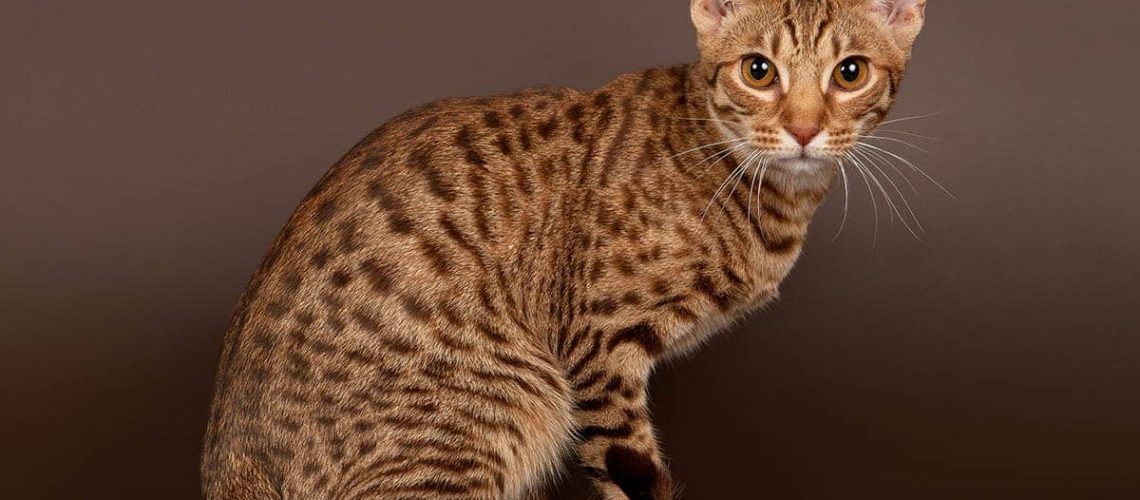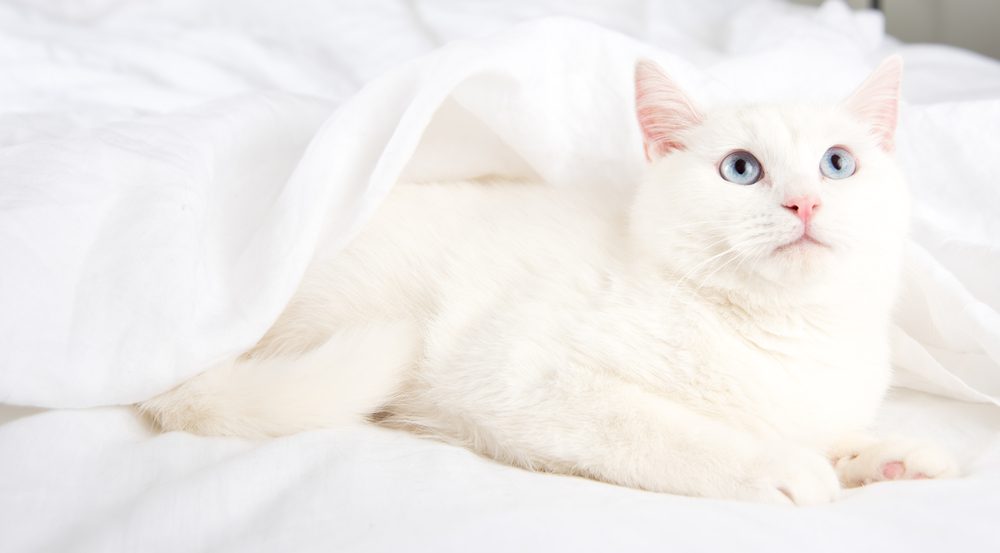Are you ready to embark on a journey into the world of cats? Get ready to be captivated by the beauty and elegance of Ocicat cats, a breed that perfectly blends spots and grace. Discover why understanding these majestic creatures is not only essential but also incredibly rewarding. Whether you're a cat lover or simply curious about feline wonders, this topic will seamlessly integrate into your quest for knowledge. So prepare to be amazed as we delve into the fascinating world of Ocicat cats, where spots meet grace in perfect harmony.
Key Takeaways:
- Ocicat cats are a unique breed known for their beautiful spots and graceful appearance.
- They have a playful and energetic personality, making them great companions for active individuals or families.
- Their short coat requires minimal grooming, making them low-maintenance pets.
- Ocicats are highly intelligent and can easily be trained to perform tricks or respond to commands.
- Despite their wild-looking appearance, Ocicats are friendly and sociable, getting along well with other pets and children.
What is an Ocicat cat and what makes it special?
An Ocicat is a breed of domestic cat that was created to resemble a wild ocelot. They have a unique and beautiful coat pattern with spots, similar to that of a leopard or cheetah. What makes them special is their resemblance to these wild cats while still being friendly and affectionate pets.
Ocicats are known for their playful and active nature. They love to climb, jump, and explore their surroundings. They enjoy interactive toys and games, making them great companions for people who lead an active lifestyle.
The story behind the creation of the Ocicat breed
The Ocicat breed was created by accident in the 1960s when a breeder named Virginia Daly crossed an Abyssinian cat with a Siamese cat. One of the kittens from this litter had a unique spotted coat pattern that caught Daly's attention. She decided to continue breeding these cats with the goal of creating a new breed that resembled wild cats.
After several generations of selective breeding, the Ocicat breed was officially recognized in 1987 by various cat associations. Today, they are loved by many cat enthusiasts for their striking appearance and friendly personality.
What does an Ocicat cat look like?
An Ocicat has a muscular body with medium-sized legs and strong shoulders. They have almond-shaped eyes that can be green or gold in color. Their most distinctive feature is their coat pattern, which consists of spots or rosettes on a background color that can vary from tawny to chocolate brown.

Ocicats come in different colors such as cinnamon silver, blue silver, lavender silver, and many more. The spots on their coat are well-defined and can be in various shapes, including round, oval, or thumbprint-like. Their short and smooth fur requires minimal grooming.
Are Ocicats friendly and good with people?
Ocicats are known for their friendly and outgoing nature. They enjoy being around people and are often described as social butterflies. They love to interact with their human companions, whether it's playing games or simply cuddling on the couch.
These cats are highly intelligent and can be easily trained to perform tricks or use a litter box. They are also known for their dog-like behavior, such as fetching toys or walking on a leash. Ocicats form strong bonds with their owners and thrive in households where they receive plenty of attention and affection.
How do Ocicats behave around kids and other animals?
Ocicats generally get along well with children and other pets when properly introduced. They have a playful nature that makes them great companions for kids who know how to handle cats gently.
When it comes to other animals, Ocicats can be quite sociable. With proper introductions and gradual acclimation, they can coexist peacefully with dogs or other cats in the household. However, it's important to supervise these interactions initially to ensure everyone feels comfortable and safe.
Taking care of an Ocicat: grooming and general needs
Ocicats have short fur that requires minimal grooming. Regular brushing once a week is usually enough to keep their coat looking its best. Additionally, trimming their nails regularly will help prevent them from becoming too sharp or causing any discomfort.
Providing your Ocicat with regular exercise is important to keep them happy and healthy. Interactive toys, climbing structures, and puzzle feeders can help satisfy their natural instincts and keep them mentally stimulated. They also enjoy playing fetch or learning new tricks.
Feeding your Ocicat a balanced diet that meets their nutritional needs is essential. Consult with your veterinarian to determine the appropriate type and amount of food for your cat based on their age, weight, and activity level.
Are there any health concerns specific to Ocicats?
Ocicats are generally healthy cats with no breed-specific health issues. However, like all cats, they can be prone to certain conditions such as dental problems, obesity, and urinary tract issues. Regular veterinary check-ups and a proper diet can help prevent these problems.
It's also important to keep up with vaccinations and flea prevention to ensure your Ocicat remains protected against common diseases and parasites.
Finding a trustworthy breeder or rescue organization for adopting an Ocicat
If you're interested in getting an Ocicat, it's important to find a reputable breeder or consider adopting from a rescue organization. A trustworthy breeder will provide you with healthy kittens that have been well-socialized and raised in a clean environment.
When adopting from a rescue organization, you'll not only be giving a loving home to a cat in need but also supporting the efforts of these organizations in rescuing and rehoming animals. Research local rescue organizations or visit animal shelters to inquire about the availability of Ocicats for adoption.
What to look for in a trustworthy breeder
Reputation and experience
When searching for a trustworthy breeder to adopt an Ocicat, it is important to consider their reputation and experience. Look for breeders who have been involved with Ocicats for several years and have a good reputation within the cat breeding community. A reputable breeder will have a track record of producing healthy and well-socialized kittens.
Health testing
Another important factor to consider when choosing a breeder is whether they conduct health testing on their cats. Responsible breeders will test their breeding cats for genetic diseases that are common in the Ocicat breed, such as hypertrophic cardiomyopathy (HCM) and progressive retinal atrophy (PRA). By ensuring that the breeder tests their cats, you can have peace of mind knowing that your future Ocicat kitten is less likely to develop these hereditary conditions.
Kitten socialization
A reputable breeder will also prioritize the socialization of their kittens. Socialization is crucial during the early stages of a kitten's life, as it helps them become well-adjusted and friendly adult cats. Ask the breeder about how they socialize their kittens, such as exposing them to different environments, handling them regularly, and introducing them to other animals and people. A good breeder will be able to provide evidence of their efforts in socializing their kittens.
Finding a reliable rescue organization
Research local rescue organizations
If you prefer adopting an Ocicat from a rescue organization rather than buying from a breeder, it is essential to research local rescue organizations in your area. Look for organizations that specialize in rescuing or rehoming Ocicats or other similar breeds. These organizations often have dedicated volunteers who are knowledgeable about the breed and can provide valuable insights and support throughout the adoption process.
Visit the rescue organization
Once you have identified a potential rescue organization, consider visiting their facility or attending adoption events they may host. This will give you an opportunity to see how they care for their cats and interact with potential adopters. Pay attention to the cleanliness of the facility, the overall health and well-being of the cats, and how knowledgeable and friendly the staff or volunteers are. A reliable rescue organization will prioritize the welfare of their cats and ensure that they are placed in suitable homes.
Ask about the cat's history
When adopting from a rescue organization, it is important to gather as much information as possible about the cat's history. Ask about any medical conditions or behavioral issues that may need special attention. Reliable rescue organizations will be transparent about any known issues and provide guidance on how to address them. Additionally, inquire about the cat's previous living situation, including whether they were surrendered by their previous owner or rescued from a difficult environment. Understanding their background can help you better prepare for welcoming them into your home.
Remember, whether you choose to adopt from a breeder or a rescue organization, taking your time to find a trustworthy source will greatly increase your chances of finding a healthy and well-adjusted Ocicat companion.
In conclusion, Ocicat cats are a wonderful combination of beautiful spots and graceful movements. Their unique appearance and friendly nature make them great companions for anyone looking for a special feline friend.
What breed is a Ocicat mix?
The ocicat breed has a lively and unique personality due to its crossbreeding of an Abyssinian and a Siamese. They are known to be talkative like their Siamese ancestors, but not as loud.
How can I tell if my cat is an Ocicat?
Ocicats have spots in the shape of thumbprints arranged in a bull's eye pattern on their bodies, including their bellies. They have a muscular and athletic body structure, with a sleek and shiny coat.
What is impressive about the Ocicat?
The Ocicat is a visually striking and athletic cat with a muscular build, resembling a wild cat, but it does not have any wild genes in its lineage. Despite its exotic appearance, the Ocicat is known for its affectionate nature and calm temperament.
What are some interesting facts about Ocicats?
The typical lifespan of an Ocicat is between 15 and 18 years. While the Ocicat is known for its distinctive thumb-shaped spots, its coat can also have four other patterns: ticked, classic tabby, solid, and pointed. Originally, the Ocicat had six different colors: tawny, chocolate, cinnamon, blue, lilac, and fawn.
Is an Ocicat a hybrid?
The Ocicat is a type of cat that was bred by Virginia Daly from Michigan. Daly's goal was to create a cat with the appearance of an Abyssinian and Siamese mix.
Are Ocicat cats rare?
Historically, the Ocicat breed is not well-known outside of the United States and is considered to be a rare breed. Its name comes from the South American wild cat, steel, which is known for its distinct spotted pattern.

















